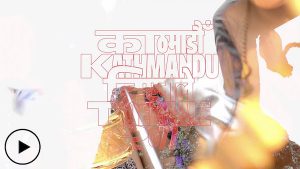Kathmandu Triennale 2077
Online-only programme: February 11–28
Venues open: March 1–31
The highly anticipated fourth edition of the Kathmandu Triennale, known as Kathmandu Triennale 2077 and organised by The Ministry of Culture, Tourism and Civil Aviation of Nepal together with Siddhartha Arts Foundation is launching for an extended period, between February 11 and March 31, 2022. Continuing to forefront health and safety in the face of ever-changing pandemic conditions, the Triennale will be presented in an adaptive format, featuring an online-only programme between February 11–28, with all five exhibition venues opening to visitors between March 1–31, accompanied by a full panoramic mapping of the exhibition for a virtual visit.
This edition of the Triennale has been intensively prepared over the past three years, the first of which saw hopeful uprisings across continents clamouring against an order that was breaking, and the subsequent two marked by the order breaking down under unexpected pressure, while unleashing more demons and entrancements along the way. The Triennale, both in its infrastructural development as well as in its artistic and intellectual propositions has been supported throughout these cycles by the strength and steadfastness of the crucial and critical dialogue between more than 100 artists, collectives, and collaborators, from over 50 nations that the project brings together, representing vast depths of ancestral knowledge and its contemporary manifestations, histories of resistance and constant reinvention, the exuberance of imagination and power of speaking out. Today, the conversations proposed in the framework of the Triennale seem to resonate louder still, across geo-political borders, boundaries of time, or ever-changing divides between people, to present an exhibition and programme with empathy, drawn from our global collective experience and memory.
Led by artistic director Cosmin Costinas and co-curators Sheelasha Rajbhandari and Hit Man Gurung, each of the five venues houses artists who are introduced by distinct narratives, inviting visitors on different journeys in each of the spaces. Patan Museum, a former royal residence of the Malla dynasty between the 14th and 18th centuries, presents a conversation, built both on confrontation and harmony, between different lineages of artistic grammar – from paubha painting in Nepal, ink in East Asia, and barkcloth in the Pacific to amulet making and body marking around the world – that intersect and synchronise in our time as contemporary forms of artistic expression, some against the odds of history, vibrantly making sense of fractures, multiplicities, and common stages. Some rooms insist on the multitude of medical imaginations that inform ways of being with ourselves, with others in the world, and in the universe. In its vicinity, Bahadur Shah Baithak, built in 1790 by the Gorkha dynasty as a centre for military strategy, composes a curatorial path about maps and cartographies which, in strong resonance with the previous section on technologies of health and the body, reveals representations from different cultural vocabularies of the self, its interiorities, its lateral social entanglements and instruments for navigating the world, as well as its vertical cosmologies. Nepal Art Council, founded in 1962 as one of the country’s largest art venues, includes artists speaking more openly about fighting and surviving, about breaking boundaries of power in nations and families, as well as the sometimes silent, sometimes painful, and sometimes ominous waiting of millions of youth around the world, locked outside of the broken economic structures of today. Taragaon Museum, designed in 1972 as a modernist fantasy and opened in 2014 as a museum and archive, shows artists who, both in the museum’s modular spaces and in the surrounding park they were invited by the Triennale to cultivate, discuss gardens as sites of colonial exploitation and resistance, of contemporary and historical worlding, of utopian dreamworlds and visions of paradise, as metaphors and reality of the unraveling climate. Siddhartha Art Gallery, established in 1987 as one of Nepal’s main art spaces, is the site of a poem on resilience in the face of man-made catastrophes along with nature’s cycles, departing from the Gorkha earthquake of 2015 and what it revealed about the makings of Nepal’s state and society. Across all venues, the reception and influence of several figures from Nepali art history of the past decades are being revisited.
As the Kathmandu Triennale 2077 team celebrates the chance to be finally welcoming our audiences, we are humbled by the patience and trust from our participating artists, the continuous support of our partner institution Para Site (Hong Kong), and our generous sponsors, patrons, and partners, without whom this expansive project would not be possible, the original design work and guidance of Wkshps (New York), and of the many individuals in Nepal and around the world who have had a decisive hand in bringing this edition to life.
Kathmandu Triennale 2077 is free of charge and open to all. More details on the exhibition, its accompanying programme, and publications will be announced periodically through our social media channels and website.


